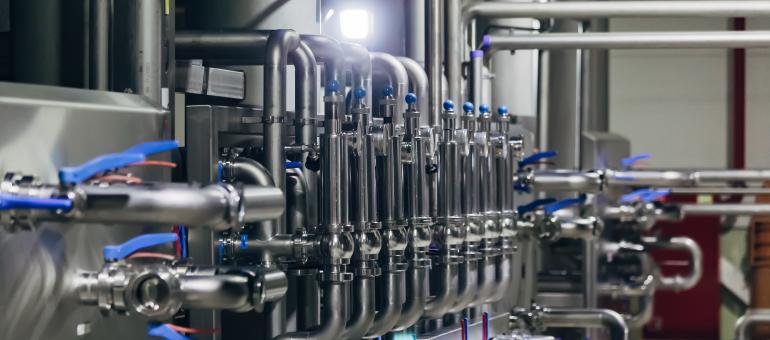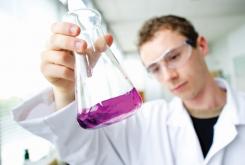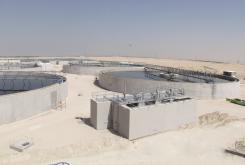Use This Roadmap to Transition to Real-Time Testing for More Control Over Water Quality

Pharma is getting faster. With shifts toward decentralized clinical trials and precision medicine ushering in the era of Pharma 4.0 for manufacturing, the industry must deliver positive health outcomes for patients at a more rapid rate and with equal or greater accuracy. In addition, manufacturing facilities of the future need the flexibility to adapt to changing production demands and Process Analytical Technology (PAT) to ensure control of manufacturing processes.
Quality is one factor that still limits how quickly pharma operations can produce and release therapeutics to the market, as many quality assays take multiple days to garner results. Gaining speed without compromising quality standards or compliance requires optimizing efficiencies while continuing to mitigate or eliminate risks.
One area poised for improvement is the monitoring of water for pharmaceutical use. Water is used throughout pharmaceutical facilities – as an ingredient in final products and intermediates or processes such as cleaning – and must be tested for impurities and contamination such as total organic carbon (TOC), conductivity, endotoxins, and bioburden. Therefore, the speed and frequency of water testing is critical for efficient quality control and production.
Real-time testing (RTT) promises an accelerated pathway to quality control and increased efficiency. RTT incorporates online instruments that enable the release of ultrapure water into production in real-time, avoiding unnecessary delays or loss of product.
Online instruments have supported process monitoring and control applications for years with standard installation, operational, and performance qualification (IQ, OQ, and PQ) packages. Now with the desire to release water into production based on data from an online instrument, solutions providers are beginning to develop and support online instruments in RTT applications with additional validation support packages required to align with the regulation around RTT – ASTM E2656. RTT is currently supported for TOC and conductivity testing, and it is only a matter of time before effective and viable online technologies emerge for endotoxin and bioburden testing. Once efficacious online endotoxin and bioburden platforms exist, validation packages will be built to support RTT for these quality attributes as well.
Growing product pipelines increase risks posed by the conditional release of water
As pharma manufacturers scale operations to meet rapidly developing demand, especially around new therapeutics, they need to optimize R&D and production process efficiencies. Yet, when pharma quality control teams perform water quality testing, they often wait anywhere from a day to up to two weeks for results, depending on the type of test. As a result, many pharma companies make a risk-based decision to improve speed to market by conditionally releasing water into production, assuming it will pass necessary testing. Through collecting enough historical data, pharmaceutical companies accept this risk while they await confirmation of acceptable test results.
However, if the water does not pass, the resulting delays can last days or weeks and cost millions. That's a calculated risk pharma companies regularly take to optimize production uptime. Still, it threatens their timelines and budgets and can potentially result in the opposite effect - delaying positive impacts on patient health.
RTT directly addresses this kind of risk, but when companies are looking to implement it, it’s essential to follow a proven roadmap to ensure success now and in the future. Here’s how to get started.
Real-time testing roadmap
In working with many pharma customers worldwide over the years, Veolia Water Technologies & Solutions has developed an RTT roadmap with Sievers instruments to ensure successful implementation. However, manufacturers seek more than just streamlined installation of instruments; they need full solutions that account for regulatory requirements, data management, and efficiencies across the enterprise. The integration of real-time testing practices can be broken down into five phases, as seen below.
Phase I: Organize and Define. Like any business-driven project, companies must identify and justify a need and understand the ROI for an RTT project. When building a team dedicated to the project’s success, leaders should ensure it is multifunctional, comprising individuals from quality control, process control, facilities, and validation, for example.
Phase II: Risk Assessment. Whether a company is transitioning from a lab-based or a different online instrument, evaluating current operations will help determine whether a new direction will deliver better results. This phase includes choosing technology and identifying where the online instrument will be placed on the operators’ water loop. Implementation teams must understand where along the water loop is most indicative of the water quality at every point of use. It will often be near the return to tank or reservoir where water is stored because, in theory, the water has traversed every part of the loop, and any contamination to which it was exposed will be detected.
Phase III: Implementation/Validation. This phase is as much about mitigating the risk of the transition as it is about the actual implementation. This phase can be broken down into method and process validation. Method validation requires a new instrument to be validated for monitoring and control purposes, often referred to as installation, operational, and performance qualification. The first step of process validation is method transfer – a more targeted bridge study – where the performance of a lab instrument is documented and transitioned to an online instrument. This step identifies from a regulatory perspective, based on U.S. Pharmacopeia (USP) <1225> monograph, that the new equipment is suitable for its intended use. Additionally, solutions providers often supply system suitability or accuracy and precision standards to compare lab-based instrument results with the latest online instrument. The next step of process validation is establishing measurement system equivalency, a step that’s regulated based on the American Society for Testing and Materials (ASTM) E2656-16. It’s essential to validate that the online instrument performs equivalently or better than the laboratory instrument, meaning the online instrument measurements must be lower than the laboratory measurements. The final step of process validation continues with a point-of-use (POU) comparability study to mitigate the risk associated with having a singular instrument monitoring the entire water loop.
Phase IV: Data Recording and Handling. With heightened concerns and regulations around data integrity, security, and transfer, it's ideal to have software capable of handling and transferring data to a quality control lab. Lab-based practices dictate collecting between one to five data points on a singular vial. An online-based release continuously collects multiple data points. Some solutions providers couple software platforms with online instruments to enable real-time review and verification sign-off of the continuously generated data used in RTT applications. During this phase, it is also critical that teams set action and alert limits, considering how failed tests will impact operations and prompt further investigation.
Phase V: Maintenance. There are multiple components to this phase, starting with instilling redundancy. For example, manufacturers transitioning from lab-based practices to online instruments must be able to revert to a lab-based sampling if there's a failure and have a standard operating procedure in place to do so. Along these lines, they'll also want to build preventative maintenance schedules for the online instrument and investigation procedures (based on FDA guidelines) for when they learn of out-of-specification (OOS) results.
How to put this plan in place
Timelines for RTT projects can vary widely. The impacts of COVID-19, and the turnover among talent in the industry have made RTT implementation a high priority for many. Companies with more urgent projects can expect to complete the five phases in as little as three months, but lower-priority projects could take up to a year. Because teams drive most of the phases above, they must fully understand whether they have the resources to complete the entire RTT project or identify how a third party can better assist in providing solutions.
The Sievers Instruments team is working hard to bring more RTT options to pharmaceutical customers. For example, our software platform DataShare Elite, ties data from all instruments, lab and online, into one centralized location for convenient, expedited access to testing results. In addition, our Sievers M500, designed with RTT in mind, automates sampling while enhancing data integrity and security for TOC testing.
Optimizing efficiencies while continuing to mitigate or eliminate risk are necessities for modern pharma companies working diligently to deliver life-saving treatments to market faster. Find out how Veolia can help your team incorporate RTT into your expanding Process Analytical Technology portfolio here.







